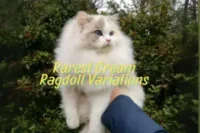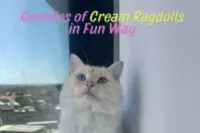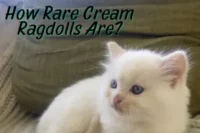Explaining Different Patterns and Color Variants in Seal Point Ragdoll Cats
Published: 10 Aug 2025
If you have ever locked eyes with a Ragdoll cat and thought, “Wow, what a stunning kitty!”—chances are, you were gazing at a seal point. These gorgeous furballs are one of the most eye-catching color types in the Ragdoll world and trust us, they’re just as sweet as they look!
Over the years, we have had the joy of raising, cuddling and learning from so many seal point Ragdolls. From their silky coats to their deep blue eyes and oh-so-soft purrs, these cats are truly something special. But did you know that not all seal point Ragdolls look the same? They come in a variety of seal point Ragdoll patterns and shades like mitted, bicolor, lynx, tortie and even more rare ones like mink and sepia!
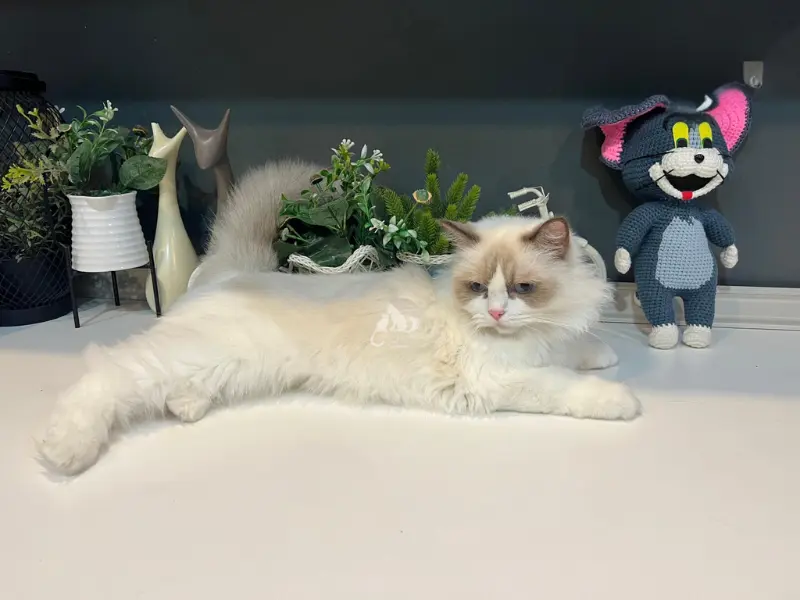
In this guide, we are excited to walk you through the colors and patterns that make each seal point Ragdoll unique. Whether you are a new cat parent, a curious cat lover or someone trying to pick the purr-fect Ragdoll companion, you’re in the right place.
Ready to dive into a world of soft paws, fluffy tails and gorgeous markings? Let’s explore the beauty of seal point Ragdoll cats together! 🐾💙
What Makes a Ragdoll Cat a ‘Seal Point’?
Let’s start with the basics, what does seal point even mean? Don’t worry, it’s not as complicated as it sounds. We will keep it simple and fun, just like a lazy afternoon with our Ragdoll cuddle buddies.
Understanding the Term “Seal Point”
In the world of cat colors, pointed means that certain parts of the body like the face, ears, paws and tail are darker than the rest. This is called a colorpoint pattern and it’s one of the defining features of a Ragdoll cat.
Now, when we say seal point, we’re talking about that dark, rich chocolatey-brown color you see on those areas. The rest of the coat is usually a creamy beige or fawn shade, creating a soft contrast that’s absolutely stunning.
Here’s a quick way to remember it:
- “Point” = the darker areas
- “Seal” = the color of those points (think: dark brown, like a seal!)
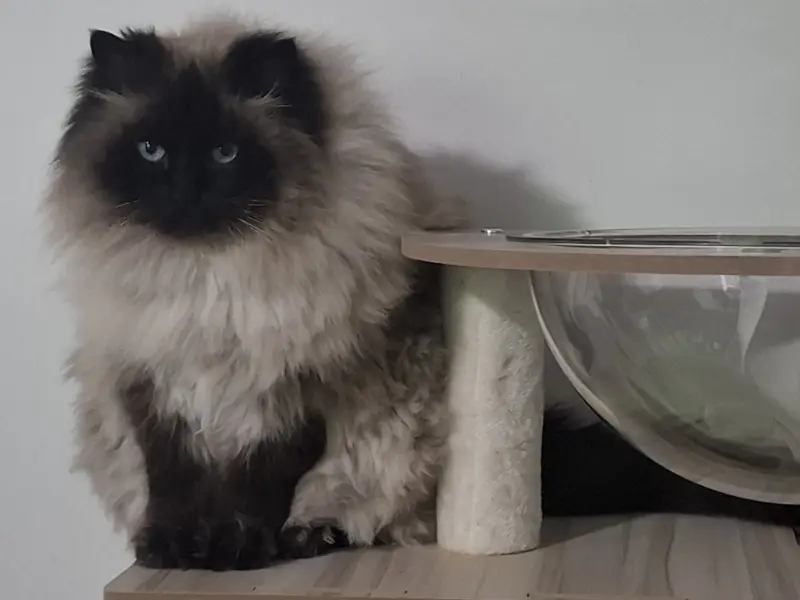
All seal point Ragdoll kittens are born white—yes, even seal points! Their colors begin to appear as they grow, usually starting to show around 1–2 weeks old and becoming more defined over time.
Why Do Seal Points Look This Way?
Okay, here’s a fun fact: seal point Ragdoll coloring is partly due to temperature! The cooler parts of their body (like the ears and paws) lead to seal point Ragdoll fur changes. It’s a natural “heat map” and that’s why you will see the points darken more in winter or in colder climates.
Pretty cool, right? Or should we say… pretty warm?
Do Colors Affect Personality?
Not at all! Seal point Ragdolls may look like royal fluffballs but their personality is just as sweet and snuggly as any other Ragdoll. In our experience, they are:
- Super affectionate
- Calm and relaxed
- Total lap cats
- Gentle with kids and other pets
Their looks may steal the show but it’s their loving nature that truly wins hearts.
Core Patterns in Seal Point Ragdoll Cats
One of the things we absolutely adore about Ragdoll cats is how they can all look so beautifully different, even when they share the same color! Seal point Ragdolls come in a few distinct patterns that make each one feel like a living work of art.
Let’s take a closer look at the three main seal point patterns you will come across: mitted, bicolor and colorpoint (classic). In this section, we will explore them in detail.
1⇒ Seal Point Mitted Ragdoll
These are the sweethearts with those adorable white mittens that make us melt every time.
A seal point mitted Ragdoll has a dark brown face, ears, legs and tail, paired with:
- White front paws (mittens)
- Longer white boots on the back legs
- A white chin
- And often, a thin white line running down the belly (called a blaze)
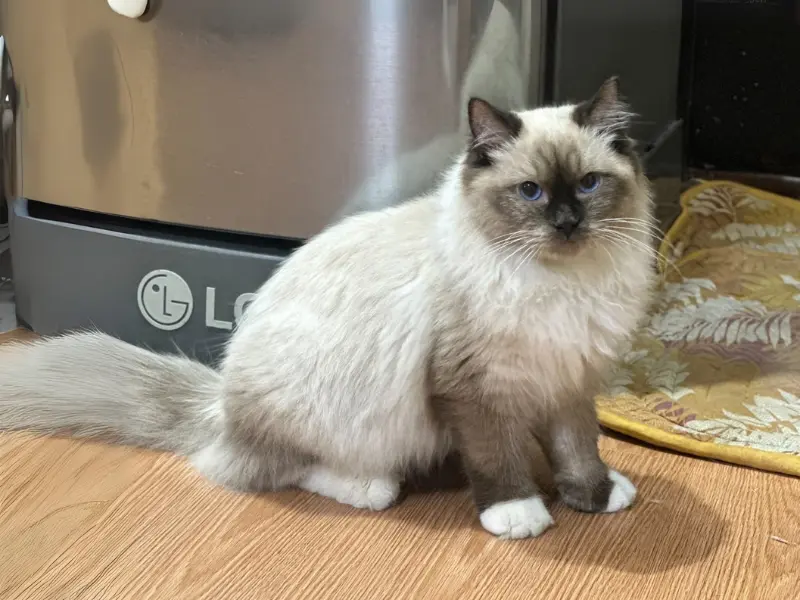
Some may even have a cute white stripe up the nose or between the eyes, this little detail makes each mitted kitty uniquely beautiful!
Eye Color
Like a true Ragdoll royalty, their eyes are usually deep, striking blue. One look, and you’re smitten.
Coat Texture
Their coat is plush, silky and incredibly soft. It feels like hugging a fuzzy blanket and we do that a lot!
Personality Snippet
Seal point mitted Ragdolls are gentle cuddle bugs. They are known for being calm, loyal and always close by when you need a furry friend.
Visual Markers: How to Spot One
- Dark “mask” on the face
- White mittens on front paws
- White boots on back legs
- White chin and possible belly stripe
- Balanced, symmetrical markings
They’re the perfect mix of fancy and friendly!
2⇒ Seal Point Bicolor Ragdoll
Oh, these cuties are showstoppers! Bicolor Ragdolls are soft, sweet and just a little dramatic in the most delightful way.
A seal point bicolor Ragdoll has:
- A dark brown tail and ears
- A soft cream or fawn-colored body
- And the most iconic feature: an upside-down white “V” shape on their face
- Plus, white legs, chest and belly
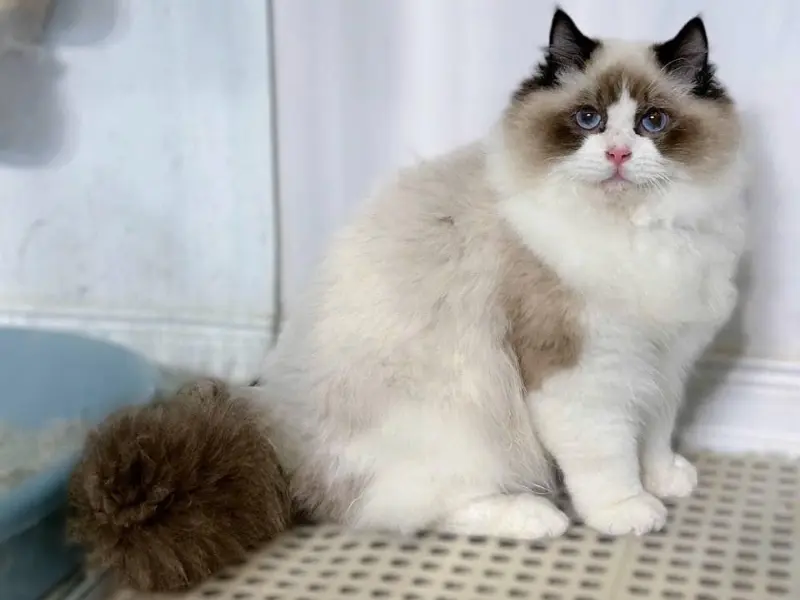
Their pattern gives them a super clean and polished look that always makes us stop and smile.
Eye Color
Their eyes are just as vivid—brilliant blue, playful and always full of curiosity.
Fun Fact
People often confuse bicolor Ragdolls with tuxedo cats… but these floofs are usually fluffier, larger and way more laid-back.
Visual Cues
- Upside-down white “V” on the face
- White legs and chest
- Dark seal-colored ears and tail
- Light-colored body with soft shading
They are elegant, easygoing and just a little bit photogenic. Okay, a lot.
3⇒ Seal Point Colorpoint (Classic) Ragdoll
Ah, the classic beauty! Seal point colorpoint Ragdolls are the pattern that started it all. They are the ultimate “textbook” Ragdoll look—rich, dramatic points with no white at all. These kitties wear their colors like a fine evening gown, and we can’t stop staring.
A seal point colorpoint Ragdoll has:
- A deep seal-brown mask on the face
- Matching dark ears, legs, paws, and tail
- A warm, creamy beige body that contrasts beautifully with the points
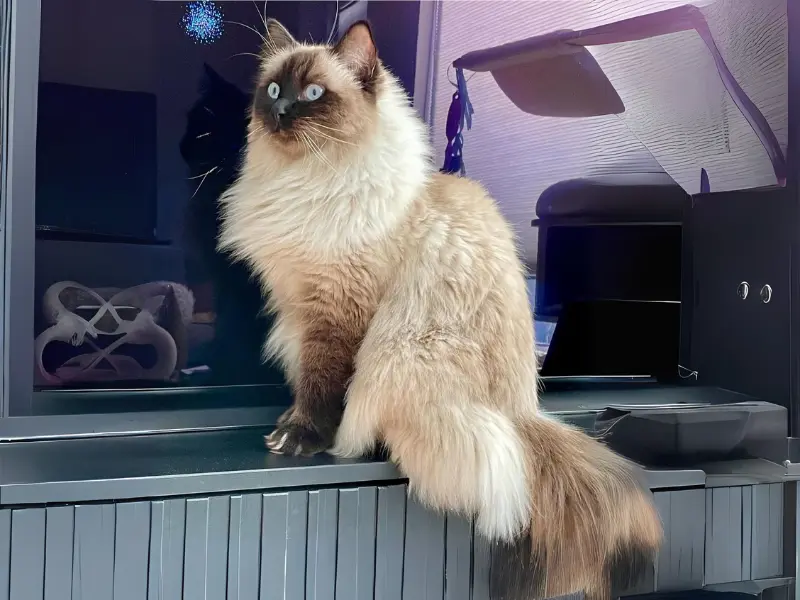
No mittens, no “V”—just pure, rich color flowing from head to tail.
Eye Color
Like all Ragdolls, their eyes sparkle in that signature, soul-melting blue. It’s as if they are looking right into your heart (and they probably are).
Coat Texture
Silky, flowing and oh-so-soft. When we run our fingers through their fur, it’s like touching a cloud—if clouds were warm and purred.
Personality Snippet
Seal point colorpoints often have that classic Ragdoll temperament—affectionate, gentle and sometimes a little more playful than their mitted or bicolor siblings. We often find ours chasing toys and then flopping over for cuddles right after.
Visual Markers: How to Spot One
- Dark “mask” on the face
- Dark seal-brown ears, legs, paws and tail
- Cream to fawn body color with no white markings
- Strong, even contrast between points and body
They are sleek, striking and full of charm, the kind of cat that turns heads and melts hearts in one glance.
Seal Point Pattern Comparison
| Feature | Mitted | Bicolor | Colorpoint (Classic) |
| Face | Dark “mask” | Upside-down white “V” | Dark “mask” |
| Chest & Belly | Some white | Fully white | No white |
| Front Paws | White mittens | Fully white | Dark |
| Back Legs | White boots | Fully white | Dark |
| Ears & Tail | Dark seal-brown | Dark seal-brown | Dark seal-brown |
| Body Color | Cream/fawn with darker shading | Cream/fawn with lighter shading | Warm beige/cream |
| Overall Look | Fancy contrast with white accents | Softer, balanced white coverage | Rich, dramatic, no white |
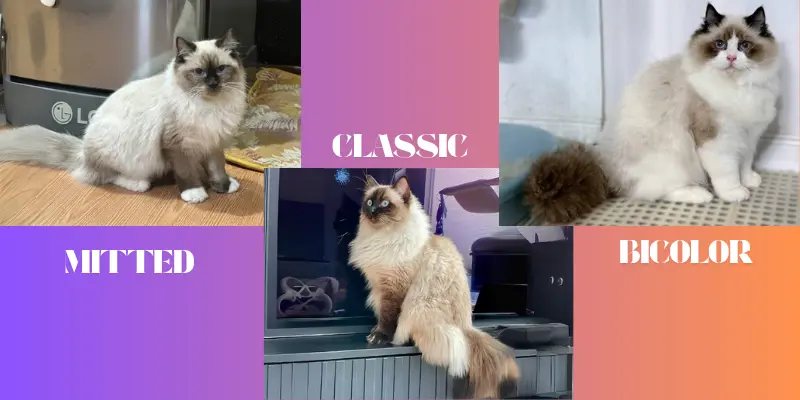
Rare and Unique Seal Point Color Variants
Not all seal point Ragdolls follow the classic look and that’s part of what makes this breed so magical! Some of our most memorable cuddle buddies have had extra special colors and markings that made them stand out in the sweetest ways.
Let’s explore some of the less common but equally lovable seal point variations. You might just fall in love with one of these rare beauties!
a. Seal Lynx Point Ragdoll
These stripy sweethearts bring a little wildcat flair to the Ragdoll world.
Seal lynx point Ragdolls have the same dark brown “points” as classic seal points but with soft, tiger-like stripes on their face, legs and tail. It’s like someone added a pinch of tabby magic to their fluff!
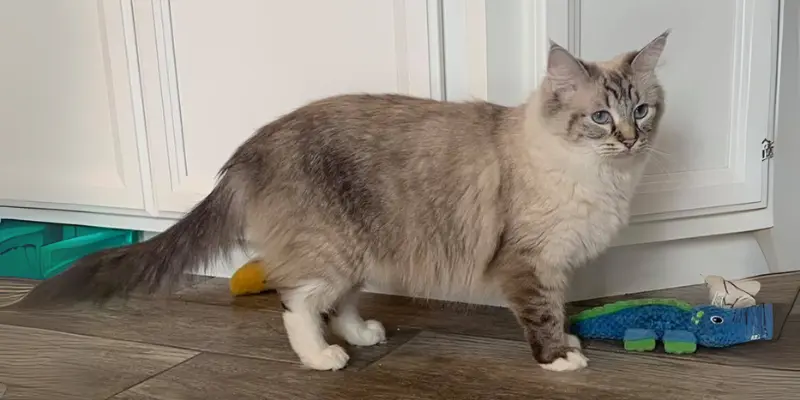
You will often spot:
- Faint M-shaped marking on the forehead
- Light striping around the eyes and cheeks
- Striped legs and tail
They still keep that luxurious cream-colored body and cuddly Ragdoll charm.
Genetics Simplified: The Tabby Gene in Action
The lynx pattern comes from the tabby gene which layers soft striping on top of the seal coloring. Think of it as a little extra flair passed down from their kitty ancestors.
Eye Color
Seal lynx point Ragdolls typically have bright blue or aqua-tinted eyes, giving them a dreamy, mystical gaze.
How They Differ from Classic Seal Points
- More visible striping
- Lighter background color
- Sharper contrast in the face and legs
- A bit more “wild-looking” but still total softies!
Our Tip for Spotting a Lynx
We always tell people: check the forehead. That faint “M” shape is the first sign you are looking at a lynx point Ragdoll. We had one named Muffin who would tilt her head just right and you could see her stripes like whiskers in motion—adorable!
b. Seal Tortie Point Ragdoll
Now here’s a colorful little heart-stealer! Torties are like a scoop of every flavor, all swirled into one.
Seal tortie point Ragdolls are a blend of seal brown with cream, red or orange patches sprinkled into the pointed areas, especially the face, ears and paws. Their patterns are always random and that’s what makes them so special!
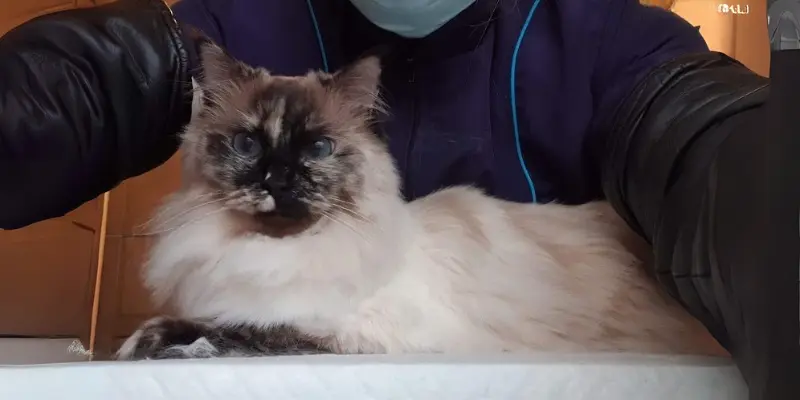
Often Female (Here’s Why)
Almost all tortie Ragdolls are female due to how color genes work on the X chromosome. Male tortoises are extremely rare and usually the result of a rare genetic mix (and often sterile).
Every Tortie is One of a Kind
Their color placement is totally unique and no two torties ever look the same! Some have just a touch of red or cream; others have bold swirls and patches.
Color Changes Over Time
Tortie kittens may start with very faint coloring but those beautiful splashes of color brighten and shift as they grow. Watching their coats evolve is one of our favorite parts of raising torties!
c. Seal Point Mink Ragdoll
These softies are like the luxurious cousins of traditional Ragdolls because they are rich in color and full of charm.
Unlike traditional seal point kittens who are born all white, mink Ragdolls are born with visible color. Their coats are deeper, silkier and have a soft shine that catches the light beautifully.
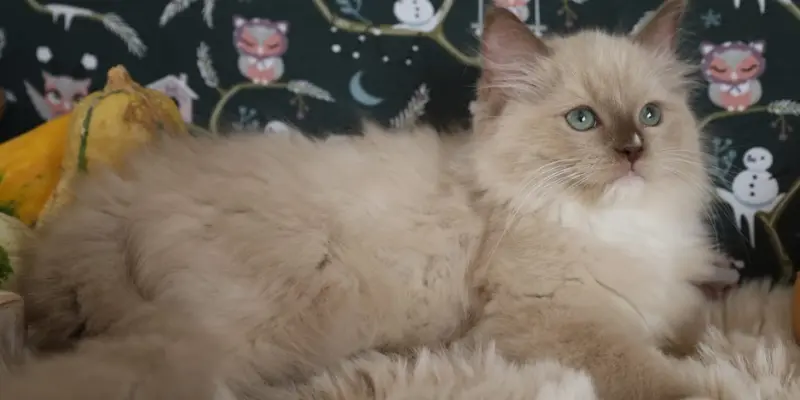
Eye Color
Minks usually have aqua or greenish-blue eyes which can look even more intense thanks to their richer coat tones.
Is It a “Real” Ragdoll?
That’s a great question and it depends who you ask. Mink Ragdolls come from non-traditional breeding lines, meaning they aren’t recognized by all Ragdoll cat associations. Traditional Ragdolls must have blue eyes and follow very specific pattern rules.
But here’s how we see it:
If they have the loving temperament, the silky coat and the laid-back charm… they are Ragdolls to us!
Why Some Breeders Don’t Recognize Them
Some breed clubs stick to a strict standard to preserve Ragdoll origins. But minks have a growing fan base who love their deeper tones and unique look. And we agree, there’s room in the cuddle circle for all kinds of Ragdolls!
d. Seal Point Sepia Ragdoll
Looking for something super rare and ultra-luxurious? Say hello to the sepia Ragdoll!
Sepia Ragdolls have the deepest, darkest coats of all the seal point variations. Their points blend more into their body, giving them a richer, all-over color.
Think of sepias as the chocolate truffles of the Ragdoll world which are dark, smooth and irresistible.
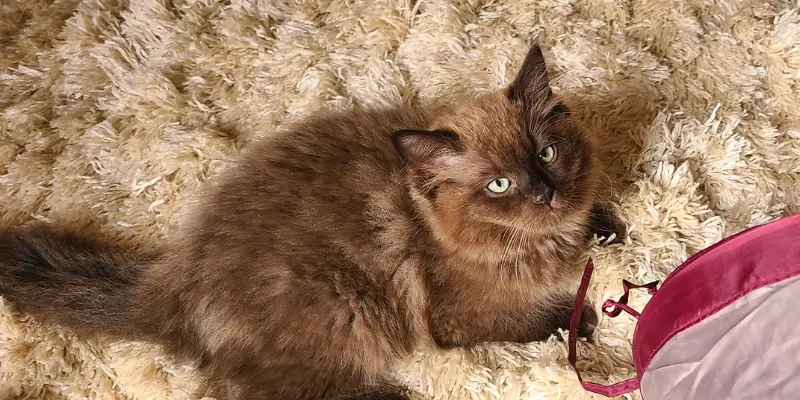
Eye Color
Unlike traditional Ragdolls, sepias can have golden, hazel or even green eyes. When those eyes catch the light, they’re absolutely stunning.
Even Softer Coat, Like Velvet
Yes, it’s possible! Sepias often have the softest coats we have ever felt. Their fur is short-to-medium length but extra plush and smooth.
Rare and Striking
Because they come from non-traditional lines like minks, sepia Ragdolls are still quite rare. But once you meet one, you won’t forget it. Their elegant color and soulful gaze make them true head-turners.
Fun Color Combos: Seal Meets Blue, Chocolate & More
Now, here’s where things get extra exciting! Sometimes, we come across cat parents saying they have a “blue seal point” or “chocolate seal Ragdoll”, and while it sounds adorable, it can also be a little confusing. So, let’s untangle those whiskers and explain what’s what because every Ragdoll is a masterpiece and understanding their color combos makes loving them even more fun!
1=> Blue Seal Point Ragdoll (Is That Even a Thing?)
We totally get the mix-up! “Blue seal” might sound like a fancy combo but it’s actually two separate color types, not one.
Let’s Clear Things Up
- Seal point Ragdolls have dark brown points.
- Blue point Ragdolls have cool grayish-blue points.
So, a “blue seal point” doesn’t officially exist but someone might use the term when they’re unsure which is which. Both are stunning but you can tell them apart by looking at the contrast between their body and point colors:
- Seal points: warm beige body with dark chocolate-brown points
- Blue points: light gray body with slate or silvery-blue points
Quick Tip
If your Ragdoll’s points look more like hot cocoa, you have got a seal. If they remind you of soft storm clouds, that’s blue!
Here is the comparison Seal point vs blue point ragdolls
2=> Chocolate Seal Point Ragdoll (Or Just Chocolate Point?)
This one is another sweet-sounding mix that can cause a little confusion, especially with dessert-loving cat parents like us!
Chocolate vs. Seal: What’s the Difference?
Both seal and chocolate point Ragdolls have brown-based coloring, but the shades are different:
| Type | Point Color | Body Color | Overall Look |
| Seal | Dark brown | Warm beige | Strong contrast |
| Chocolate | Milk chocolate | Ivory | Softer contrast |
So, Is There a “Chocolate Seal” Ragdoll?
Not officially. A Ragdoll can be chocolate point or seal point but not both. Still, we often hear folks say “chocolate seal” when they mean one of the two.
If your Ragdoll has a lighter, more milk-chocolate look to their ears and paws and a creamier coat overall, they might just be a chocolate point!
These color names can be a bit of a puzzle but once you start spotting the differences, it becomes a fun little game. Whether you have got a seal, blue, chocolate or one of the more unique varieties, we can all agree: every Ragdoll is absolutely purr-fect in their own way!
How Seal Point Ragdoll Kittens Change as They Grow
If you’ve ever welcomed a Ragdoll kitten into your home, you know how magical it is to watch them grow, not just in size but in color! Seal point Ragdolls go through some fascinating changes in their first few months (and even years) and trust us, it’s a journey full of surprises.
Let’s walk through how our fluffy little friends transform over time and what you can expect if you’re raising a seal point Ragdoll kitten.
They’re Born Snow White!
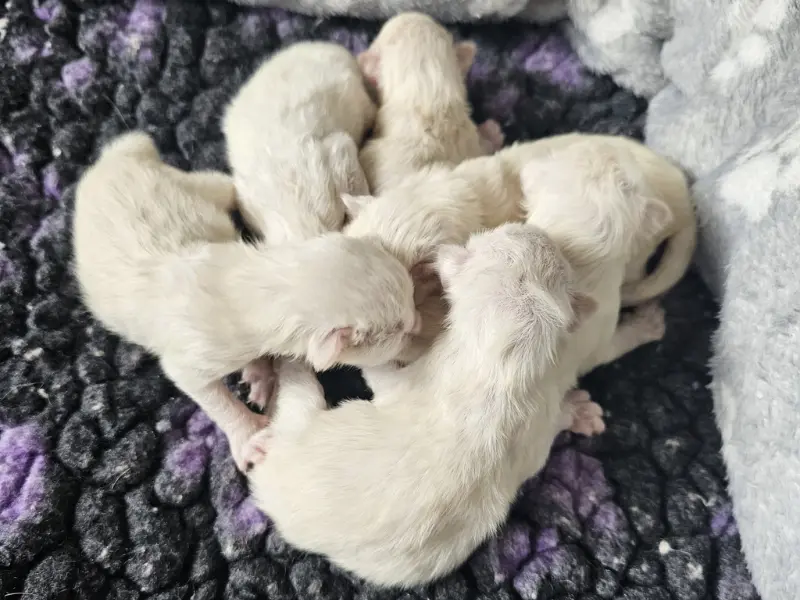
Yes, it’s true—all Ragdoll kittens are born pure white. At birth, you wouldn’t be able to tell if you’ve got a seal, blue, mink or lynx! Their coloring starts to show after just a week or two, usually beginning on the:
- Ears
- Nose
- Tail
- Paws
That’s where those rich seal brown points begin to peek through.
When Do Their Colors Fully Develop?
Color development is gradual. Here’s a little timeline based on what we have seen raising our own seal point fluffballs:
- 1–2 weeks: Hints of point color start appearing
- 4–8 weeks: The mask on the face begins to form
- 12–16 weeks: Most of the points are visible but still light
- 6 months to 1 year: Colors deepen significantly
- 1–3 years: Full adult coloring appears, richer, darker and more defined
So if your kitten still looks a bit “washed out” at a few months old, don’t worry! Their coat is still a work in progress.
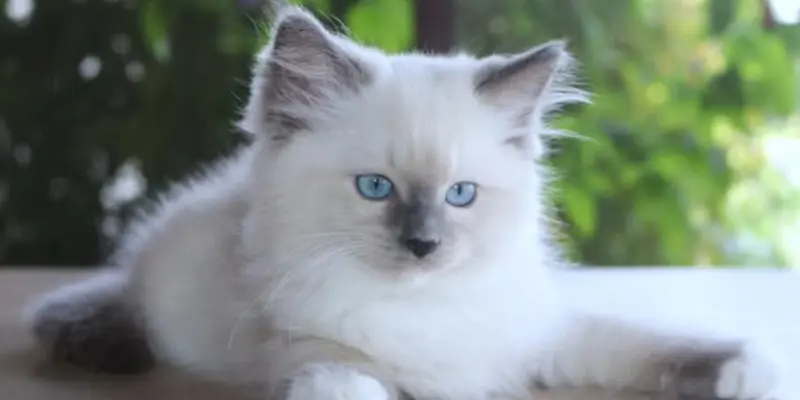
Why Do They Change Color Over Time?
It’s all thanks to temperature-sensitive genes. This special trait means the cooler areas of the cat’s body develop darker fur (like the ears and paws) while warmer areas stay lighter.
This also means:
- Kittens raised in cooler climates may develop deeper coloring sooner
- Cats may darken with age or seasonally (we notice it more in winter!)
We always giggle when one of our cats comes back from a chilly nap spot looking a little “extra chocolatey.”
Tips for Identifying Pattern Early
If you are curious about whether your kitten is mitted, bicolor, lynx or something rarer like mink or sepia, look for these early signs:
- White paws? Likely a mitted or bicolor
- Little stripes on the face? Could be lynx
- Blaze on the nose? Classic mitted trait
- Colored from birth? Might be a mink or sepia
We love going back through kitten photos to see how much our Ragdolls have changed, especially those before-and-after shots around their first birthday!
Watching a seal point Ragdoll kitten grow into their full beauty is a truly rewarding part of being a cat parent. It’s like unwrapping a gift that keeps getting prettier every day and with their gentle personalities, you get all the love to match the looks.
How to Choose the Right Seal Point Pattern for You
With so many beautiful patterns and color variations, choosing the right seal point Ragdoll can feel like a big decision. But don’t worry, we are here to help make it fun, easy and totally heartwarming. After raising many Ragdolls over the years, we’ve learned that each pattern has its own little charm!
Here’s how to find your match, whether you’re drawn to white mittens, striking stripes or one-of-a-kind markings.
Start with What Catches Your Eye
Let’s be honest, sometimes we fall in love with a cat at first purr. That’s totally okay! Here are some pattern highlights to guide your gut:
- Love a classic look? Go for a seal point mitted—simple, elegant and timeless.
- Want more white and balance? Try a seal point bicolor—they are playful and clean-looking.
- Crave something rare and unique? A seal lynx, tortie, mink or sepia might be calling your name!
Whichever pattern tugs at your heart, you can’t go wrong, they are all Ragdoll sweethearts at the core.
Think About Grooming and Shedding
All Ragdolls have plush, semi-long coats but some patterns may appear a bit fluffier than others due to contrast and shading.
- Sepias and minks often look denser and shinier
- Bicolors may appear cleaner longer due to more white
- Torties and lynx can show more visual changes as seasons shift
Our tip? Brush a few times a week no matter the pattern because it keeps their coats smooth and cuddle-ready!
Consider Your Lifestyle
Ragdolls are famously low-drama but each pattern still brings its own vibe.
- Families with kids or dogs? We’ve found mitted Ragdolls are super easygoing and adapt well.
- Love taking photos? Bicolors and torties have that show-stopping charm.
- Want a low-maintenance charmer? Mink and sepia coats often shed a bit less and feel like velvet!
Of course, every cat has their own personality, but certain patterns seem to match certain homes beautifully.
Match Their Look to Your Home (Just for Fun!)
Okay—this one’s a bit silly but we have had cat parents tell us:
“We chose a mitted Ragdoll because her white socks matched our carpet!”
Whether you are looking to coordinate with your décor or just love a certain aesthetic, there’s nothing wrong with a little fluff-to-furniture harmony.
Ask the Breeder or Rescue Questions
Before bringing home your new cuddle buddy, it’s always good to ask:
- What pattern is this kitten?
- Have their colors started to settle in?
- Do they come from traditional or non-traditional lines?
- Any unique features I should know about?
The more you know, the better prepared you will be and the stronger your bond will be from day one.
No matter which seal point pattern you choose, one thing’s for sure which is you are about to bring home a fluffy, gentle man and deeply affectionate friend. Each Ragdoll is a little gift wrapped in fur and we’re so excited for the joy they’ll bring to your life! 💙🐾
Conclusion: So Many Beautiful Seal Point Fluffballs to Love
Whether your heart melts for white mittens, bold stripes or rich velvet coats, one thing’s for sure—seal point Ragdolls are full of beauty, personality and pure love. Each pattern, from the classic mitted to the rare sepia, brings its own kind of charm and we have loved every second of raising these cuddly companions.
As Ragdoll parents ourselves, we know how special it is to watch your kitten grow into their full colors, to learn their quirks and to share your home (and your heart) with a gentle, purring friend like you.
We hope this guide helped you better understand the colors and patterns in seal point Ragdoll cats, whether you are preparing to welcome a new kitten, looking to identify your current fluffball’s pattern or simply daydreaming about your future feline soulmate.
And remember—no matter the color or pattern, every Ragdoll is truly purr-fect in their own way.
Got a seal point Ragdoll at home? We’d love to hear about them! Share your stories, photos or questions with us in the comments or tag us on social media. Let’s keep spreading the Ragdoll love, one fluffy tail at a time.
FAQs: Colors and Patterns in Seal Point Ragdolls
Here are frequently asked questions:
A seal point Ragdoll has rich dark brown coloring on their ears, face, paws and tail, while the rest of their body stays lighter—usually cream or beige. It’s a classic and much-loved look among Ragdoll fans.
Seal point Ragdolls come in several beautiful patterns like mitted, bicolor, lynx, tortie, mink and sepia. Each one has unique markings that make your kitty one of a kind.
Mitted Ragdolls have white “mittens” on their paws and a white chin while bicolors have an upside-down white “V” on their face and more white on their legs and belly.
Yes! All Ragdoll kittens are born white. Their point colors develop over time and usually darken as they get older, especially in cooler climates.
Yes, lynx and tortie seal point Ragdolls are less common and totally unique in their markings. No two torties or lynx points look exactly alike!
Mink and sepia seal points have deeper coat colors from birth and different eye shades. Traditional seal points are born white and always have bright blue eyes.
Not really, personality isn’t tied to color. Seal point Ragdolls are just as sweet, calm and cuddly as any other Ragdoll pattern!

- Be Respectful
- Stay Relevant
- Stay Positive
- True Feedback
- Encourage Discussion
- Avoid Spamming
- No Fake News
- Don't Copy-Paste
- No Personal Attacks



- Be Respectful
- Stay Relevant
- Stay Positive
- True Feedback
- Encourage Discussion
- Avoid Spamming
- No Fake News
- Don't Copy-Paste
- No Personal Attacks


